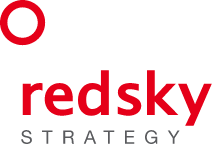News
The Innovation Challenge, Part 1: Do You Really Know What You Want?

By Rebecca Rounsavill, Managing Director
Step one in every innovation process is to define the challenge, or as Peter Drucker first coined it, the “window of opportunity.” Many marketers disregard this step, believing that they already know what they need. So, as consultants, we try to encourage participation by making it sound sexier, using phrases like “homing in on big growth” or quotes like this gem from Paulo Coelho, “Choosing one path means abandoning others — if you try to follow every possible path, you will end up following none.”
Focusing on a clear “window of opportunity” is critical because it helps inspire a more compelling discovery journey, igniting neural-connections, resulting in bigger ideas in areas that can deliver optimal growth.
Imagine you were told to find inspiration for brand innovation — without any other information. You might access the usual sources: category trends, macro trends, customers, etc. But how will you create differentiated, out-of-the-box ideas with inspiration like that? If you focus on the typical sources, you gain only typical, surface- level ideas.
Even if you choose a more common trend, like extra protein, for example, you can create a more impactful inspiration journey that takes you to a deeper level. You can talk to bodybuilders, research keto diet blogs, interview nutritionists, try a keto diet for three days, or look at menus for keto meal delivery services. By choosing a direction, you can attain a deeper level of understanding which should ultimately deliver the insights needed to create more compelling and relevant ideas.
So How Do You Define Your Challenge?
There are multiple ways of doing this, and the approach depends on the challenge. Some ideas to consider include: focusing on an emerging trend, exploring a subset of the target, identifying a distinct part of the customer journey, or discovering a need gap based on a category demand landscape.
Subset of the Target
Many companies have been very successful looking at a subset of the target, or even a secondary target (like Dove for Men). One of my favorite examples of this phenomenon was the launch of U by Kotex. To reinvigorate their brand, they focused on young women, new to the market, with no preconceived ideas of available brands. You can immediately see how this revealed a new path of inspiration — teen girl music, influencers, fashion, and more. This resulted in a completely new look and feel for the brand, and a big departure from the feminine pastels of competitors.
Focusing on a Distinct Area of the Customer Journey
Right now, focusing on a distinct area of the customer journey is extremely important. As a result of the pandemic, online shopping habits have increased. In-store habits have also changed, and now include social distancing and wearing masks. This can be an apprehensive, uncomfortable experience, making grocery shopping unpleasant. The newest iteration of the Lays ‘Smiles’ campaign attempts to negate this discomfort. Who doesn’t want to see a happy face staring at them from the shelves if everyone else is wearing a mask?
Category Demand Landscape
The other tool we use is the category demand landscape, which is a great way to consider category segments and needs. It helps us understand which brands are servicing those needs and helps us to identify the white space in between. Recently, a company asked us for help with packaging innovation ideas. Starting with a category demand landscape helped us discover that a segment of consumers (“out of home”) played a much bigger role than previously known, with more unmet needs. This led to a more inspiring innovation process and better results for the client.
So if you are undertaking innovation, don’t roll your eyes and fill in the template for the brand challenge —– really think about various potential areas of growth for your brand. By taking the time and proper steps to consider innovation opportunities, you may discover a dynamic new approach to your brand’s look, feel, and strategy. Don’t be afraid to take on the challenge!
